|
|
|
|||||



|
"Construction is complete on the County Office Building's new green roof. The final step was installing vegetation, which was completed during the first week of July. The newly installed roof contains 9,000 sedum plants that will grow and spread, covering the roof with a layer of green foliage. 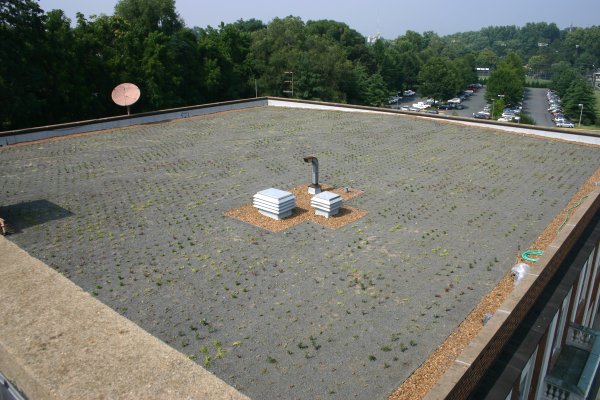 With funding made available through the Virginia Department of Conservation and Recreation, the County of Albemarle has installed a green roof over a large portion of the County Office Building. The area is comprised of the portion of the building housing Community Development, which is adjacent to visitor's parking. The project covers over 9,000 square feet of the building with two types of green roof systems. The roof is the first demonstration project of its kind in the region and joins other green roof proposals in the area including an expansion of Rousse Hall at the University of Virginia and portions of the new Monticello visitors center. In addition, interest in residential applications continues to expand. We are hoping this demonstration project will help to plant the seeds for a greener and cleaner Albemarle County. 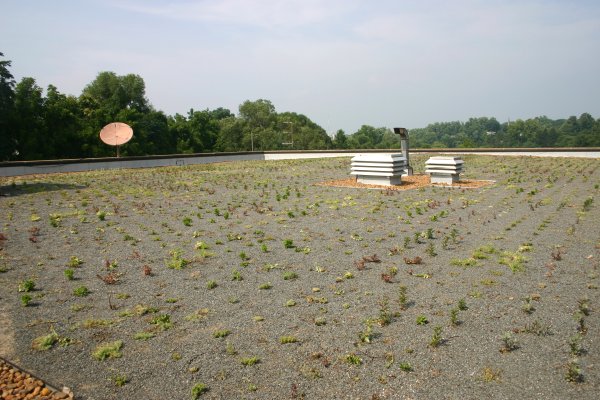 The roof of the County Office Building has been replaced as part a scheduled roof replacement. The new roof is complete and covered with the two types of green roof systems included in the demonstration project. The first type is called "Green Grid" and consists of 18" X 24" reinforced plastic trays to hold the soil-like growing medium and the plants. The trays are designed to be movable to allow for access to areas of the roof that may require maintenance. The other system type is "Envirotech" and it will cover the largest part of the roof much like a blanket. The Envirotech system includes a waffle-like layer that conveys excess water away from the green roof. Navigate to the links below for specific product specification and performance information. Material costs for the Green Grid and Envirotech systems alone are $5 and $10 per square foot respectively. Technology and the simple nature of green roofs allow for these systems to be economical, particularly when savings from energy costs among others are factored in. 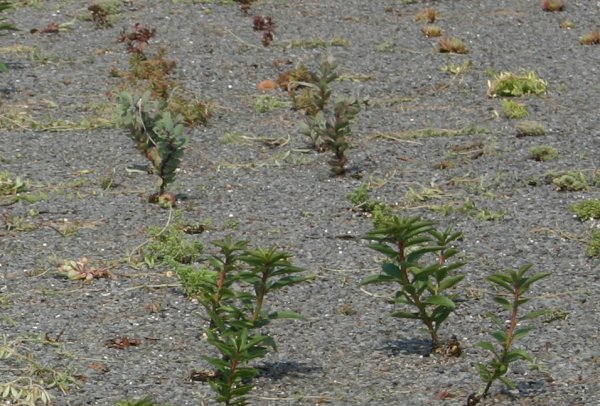 There are two general types of green roofs: intensive and extensive. Intensive green roofs include a deep growing medium or "overburden". The deeper the growing medium, the wider variety of plants can be grown. Intensive roofs are often designed as active recreational or reflection spaces and access is encouraged. The other type, extensive, is what the County is preparing to install. These roofs are not intended to be an active space, access is limited, and the overburden is often shallow, allowing for only certain types of plants to grow. Only very drought tolerant plants with horizontal root structures are selected for the extensive green roofs. Most often this consists of sedums, which are used widely on green roofs with success. Sedums can be found in arid areas with poor soil and can take root and survive in harsh conditions. The primary maintenance required for green roofs is in the event of a severe drought. During these times, minimal irrigation is required to sustain the plants. In addition, the green roof systems selected are particularly adaptable as they contain a system to detain moisture for slow absorbtion by the plants 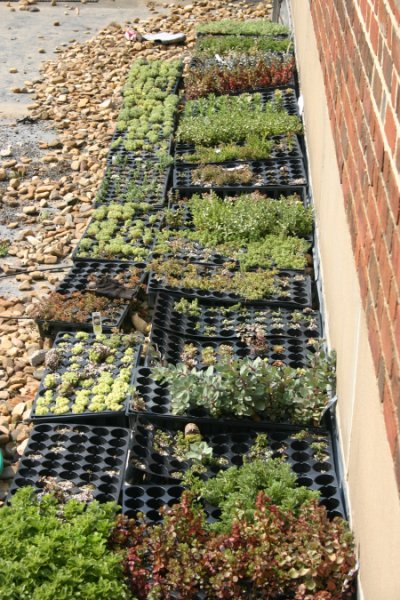 Albemarle County is excited to join with others green roof projects in the Commonwealth, such as the City of Alexandria which is installing a 10,756 square foot green roof on their health department building. Other smaller projects have been completed or are in the works at James Madison University, Fairfax County, Arlington County, Alliance for the Bay, Richmond Area, and Downtown Greens Community Garden in Fredericksburg." (Albemarle County Green Roof Project Page, July 11, 2005) Editor's Note: The green roof is designed to filter out pollutants and to save energy. The project is supported with funding from the Chesapeake Bay Program through the Virginia Department of Conservation and Recreation and has received a $37,000 grant from the Environmental Protection Agency. Here is an example offered by the county of what it might look like once it is filled out [September next or so]: 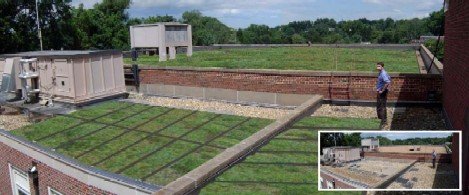 Not exactly the Hanging
Gardens of Babylon but a nice start.
|
